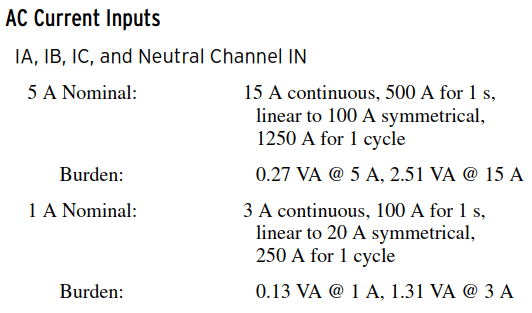Dear All,
Many digital relays accept 0 to 1 A in their inputs for functions 50, 51, 37, etc.
But what is maximum acceptable input value for a relay?
As you know, current transformers saturate in case of short circuit. So they limit input current of relays.
To select current transformer, we need to know maximum accepatble current value of relays. So it will be possible to select ALF'.
thanks
Many digital relays accept 0 to 1 A in their inputs for functions 50, 51, 37, etc.
But what is maximum acceptable input value for a relay?
As you know, current transformers saturate in case of short circuit. So they limit input current of relays.
To select current transformer, we need to know maximum accepatble current value of relays. So it will be possible to select ALF'.
thanks

